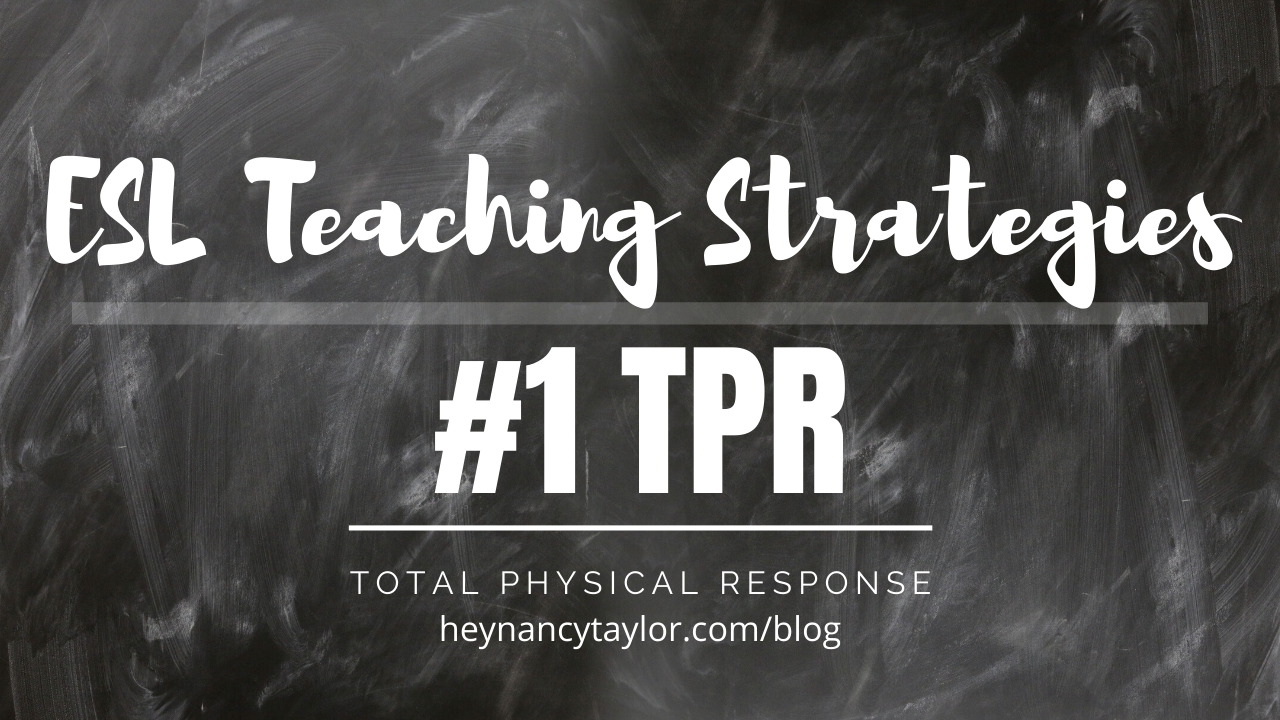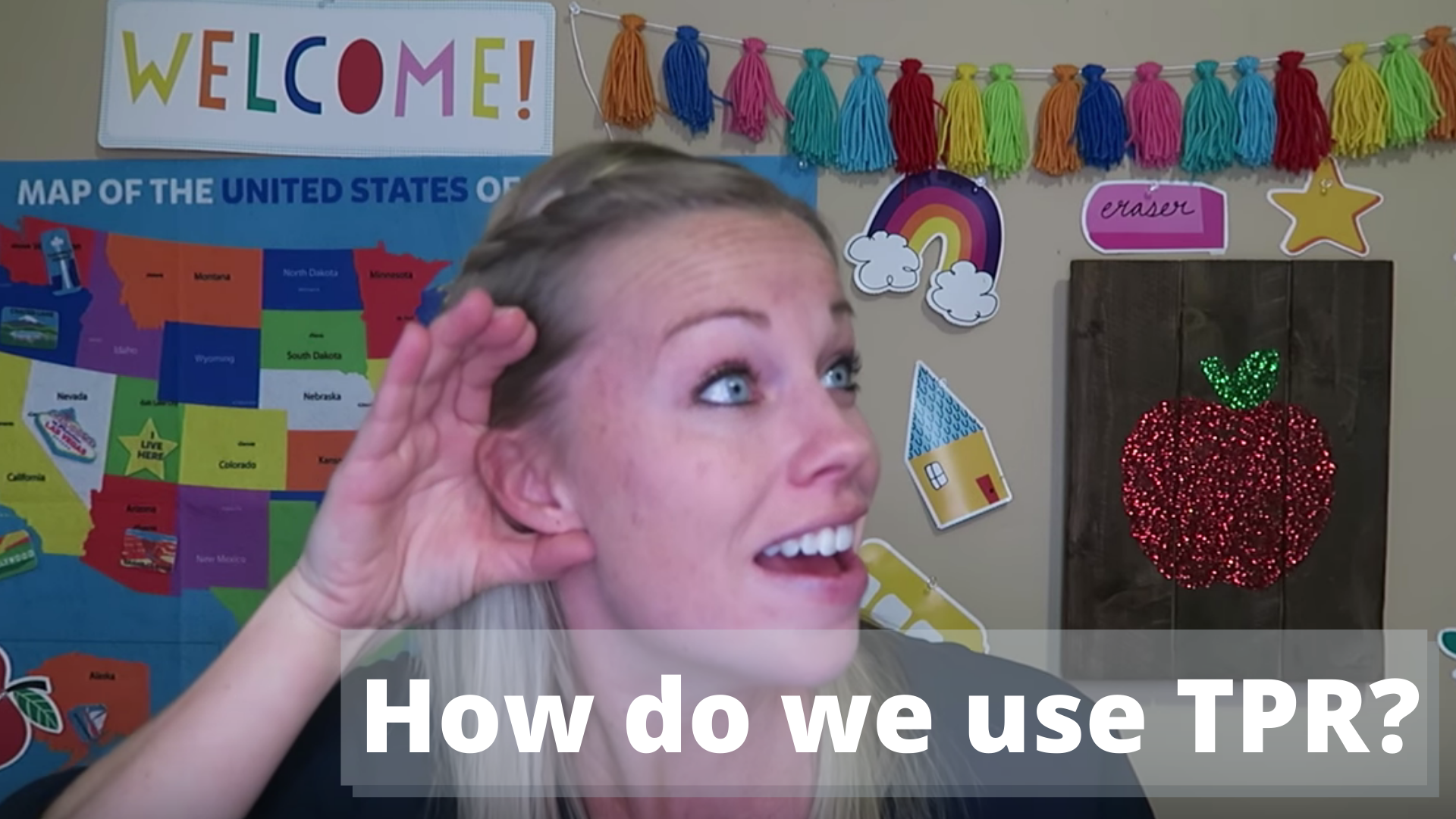ESL Teaching Strategies: #1 TPR

Welcome my fellow educators and Chaos Coordinators! Today on the blog I have the first in a series of posts all about ESL teaching strategies. The focus for today is TPR. Let's boogie!

Nancy has a great video for my audio/visual learners all about this strategy. Complete with her own language (hilarious) and a real life example. Check it out:
What is TPR?
Total Physical Response (TPR) is a language teaching method built around the coordination of speech and action; it attempts to teach language through physical (motor) activity.
TPR combines movement and language together. It is used by both the teacher and the student to increase learning during class time. The student connects the actions to language.
I believe that TPR comes naturally to those teaching language and/or music. When you are trying to encourage understanding and recognition of new words, actions help you explain the meaning without adding to the dialogue. This keeps the student/teacher speaking ratio at 50/50 which is what we want to do.
Example: When I was in my 7th grade Spanish class I specifically remember my teacher using TPR for most of the class. Imagine my awkward gangly, brace-faced self (ok maybe don't imagine) sitting in a classroom hearing a foreign language I had no experience with at all. Not only was this my first exposure to the language but also to learning a new language. The lesson was on animals - specifically pets. I vividly remember my teacher pinching his fingers together on both hands and running them through imaginary whiskers while saying aloud "Gato". The whole class followed and I will forever remember the Spanish word for Cat. If I would've had more dedication I probably would know more... but I digress.
TPR accommodates for three different types of learners: visual, kinesthetic, and audio. This is a great whole brain teaching technique. By moving your body while speaking and having the students move too, you start to utilize different areas of the brain. This leads to greater retention of the words and content being taught. The different experiences will make more impacts in the brain. Consequently, this leads to greater understanding from the student.
Remember two important practices for using TPR while teaching:
1) Teach the objectives! Take out the fluff and keep it simple. But teach it well!
2) Adjust for the student understanding. There is a big reason, well many reasons, why each teaching slide is not scripted. This is one of them. Every student enters your class with a unique background, experience with the language, and understanding of the world. You need to accommodate every learner as you use TPR to teach.

Why do we use TPR?
The best example I could give is found in Nancy's video above when she demonstrates the importance of TPR by speaking her own language. Again, so funny! At first you don't understand the phrase and then when she implements the magic of TPR you know exactly what she is saying.
Along with teaching, I certainly have utilized TPR in my full time job as a stay-at-home mom. My one year old daughter is currently acquiring language and TPR is huge in helping her learn new words. She waves "bye-bye" as we leave out the door to get in the car. She claps when she is happy or excited. And as an alternative to screaming, she is beginning to tap on her mouth when she is hungry. Hallelujah! This will help her as I say the words "bye bye" "happy" and "food" to learn the action and the sound get her what she needs and she will start to communicate more effectively.

How do we use TPR in the online classroom?
Based on what you are trying to achieve, there are two types of TPR to use when you are teaching English Language Learners.
Instructional TPR:
This is used to Model for the student and communicate expectations. This is not something the students need to mimic or repeat. Examples include classroom commands, asking questions, praise, etc.
Here are some common TPR moves you can use in your classroom:

Vocabulary TPR:
This is all about teaching new words and phrases while implementing actions. This type of TPR is something you want the students to copy as you teach. For instance, animals, feelings, transportation, verbs, etc.
Here are some examples of TPR I have used in the real classroom:

*Side note: Apparently you can also use my "cold" to convey "awkward" Haha!
Think about ways to use more TPR as you prepare your upcoming classes. What words can you give greater meaning to using your hands, facial expressions or moving your body? What do you want the student to learn? I promise this will lead to increased understanding from your students.

I hope you enjoyed learning this ESL teaching strategy. Watch for more in the near future to improve your teaching skills.
Sincerely
Teacher Stephanie



